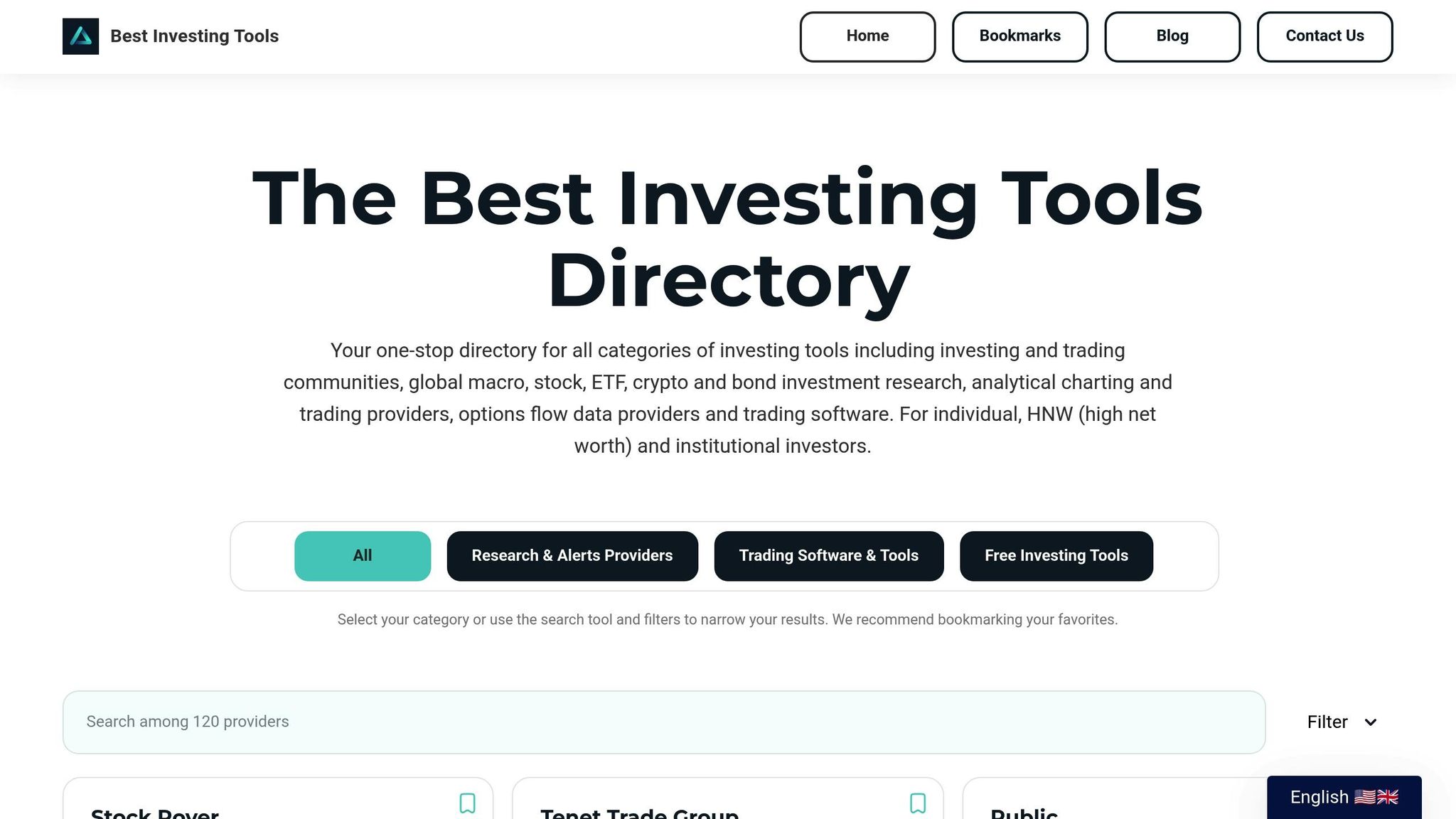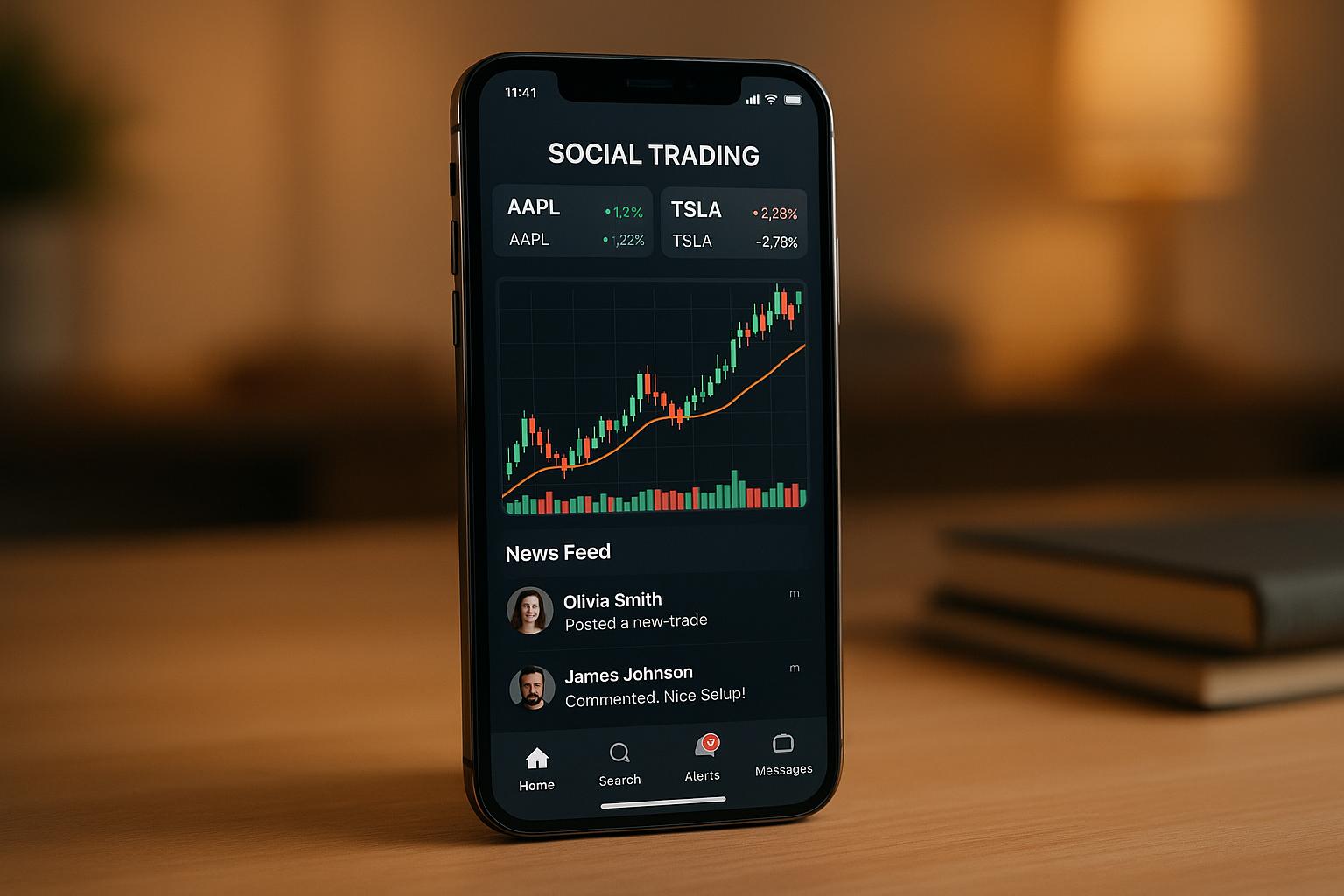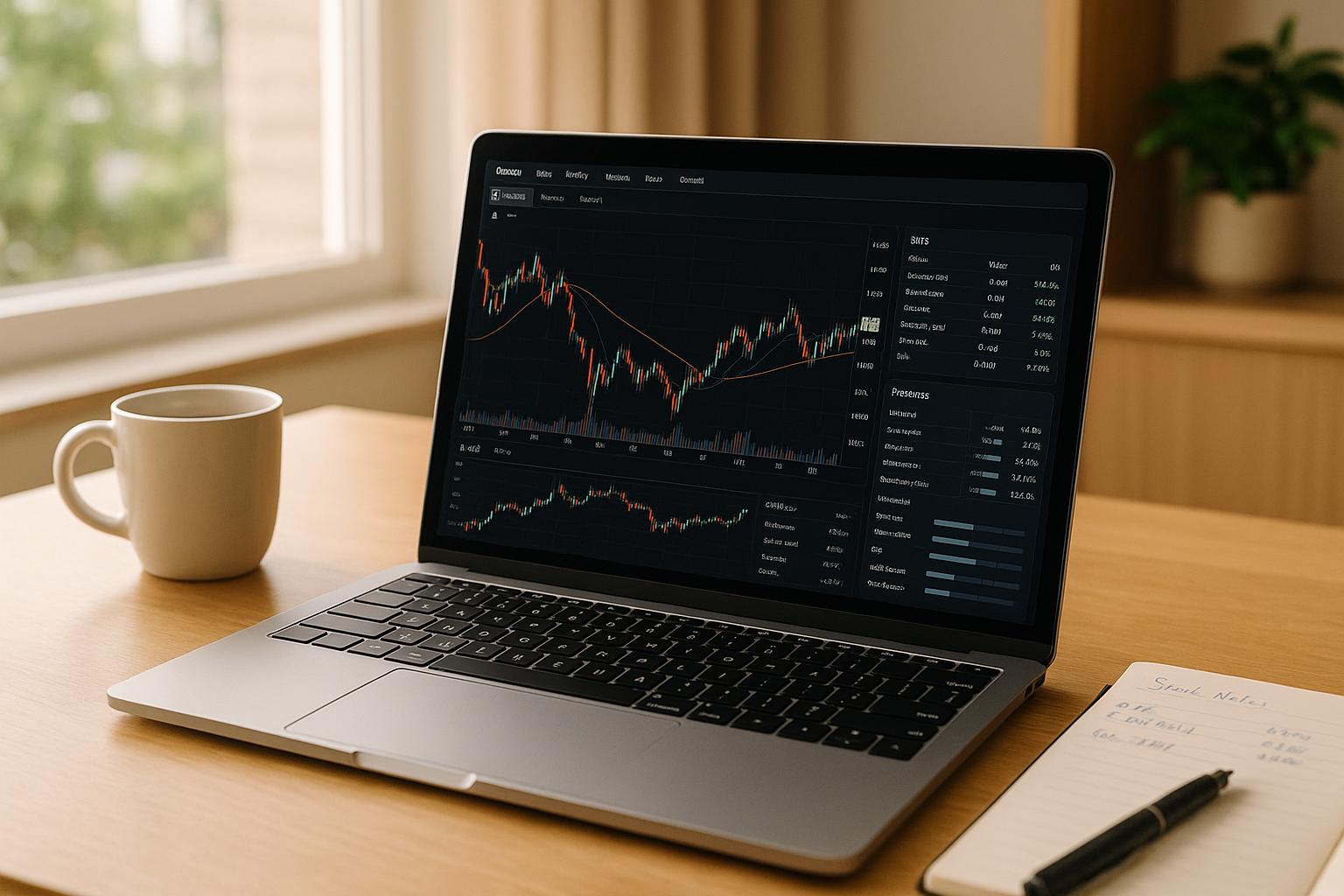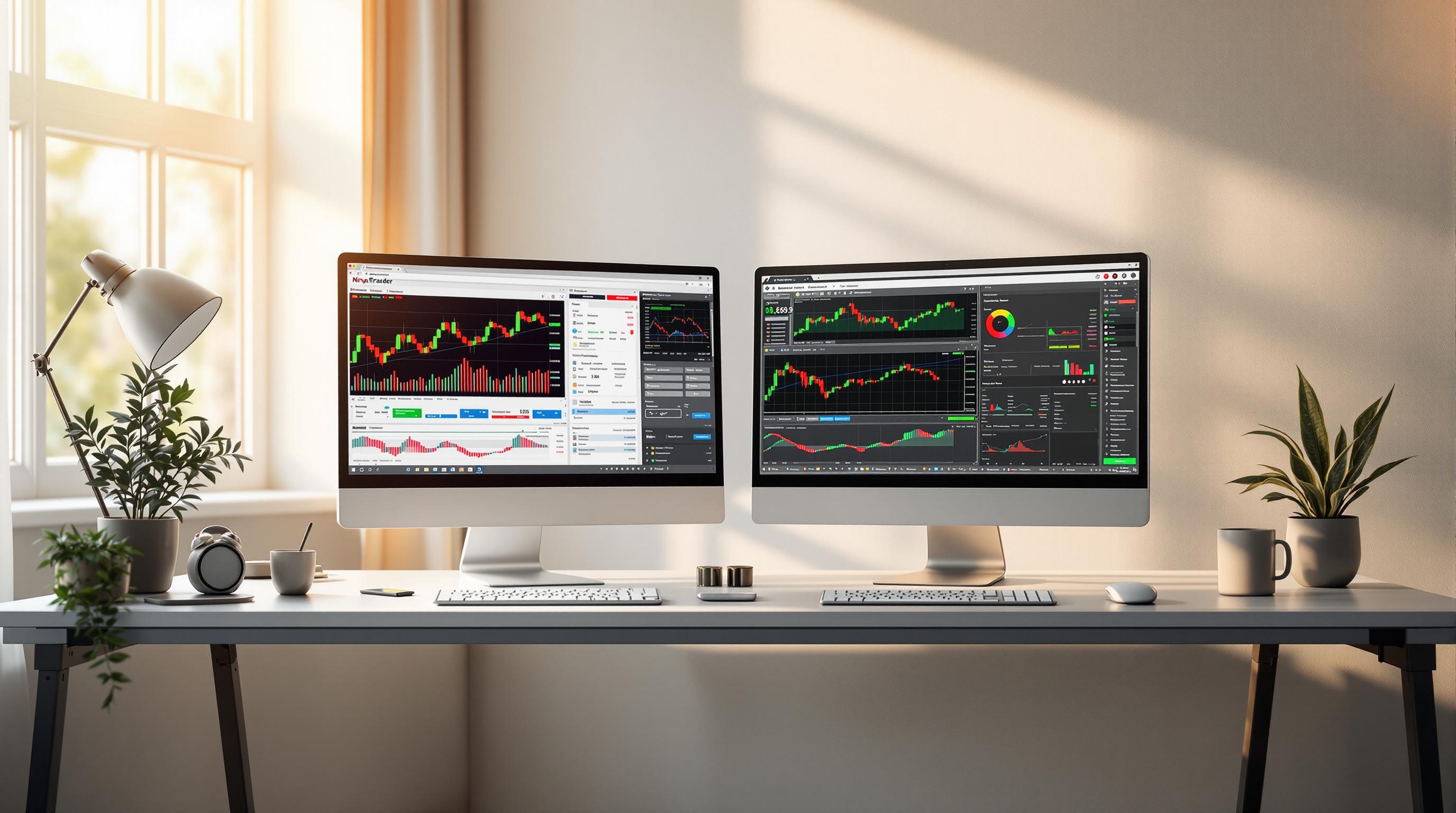Portfolio backtesting lets you test investment strategies using historical data without risking money. Free tools make this process accessible but come with risks that can lead to unreliable results. Here's what you need to know:
-
Key Issues:
- Overfitting strategies to past data.
- Ignoring trading costs like slippage and commissions.
- Survivorship bias, where failed companies are excluded.
- Look-ahead bias, using data unavailable at the time.
- Market changes making historical data less predictive.
-
How to Avoid Mistakes:
- Include realistic costs (e.g., slippage, transaction fees).
- Use out-of-sample testing to validate strategies.
- Test strategies across different market conditions.
- Choose platforms with high-quality data and realistic simulations.
- Choosing a Platform: Look for tools offering extensive historical data, flexibility in strategy creation, and robust performance analytics. Free platforms like TradingView or Backtrader vary in features, so pick one that matches your needs.
Backtesting is useful but not foolproof - combine it with other research methods for better investment decisions.
19 Common Backtesting Mistakes (and How to Prevent Them)
Common Mistakes in Free Portfolio Backtesting
Even the most experienced investors can stumble when using free backtesting tools, leading to skewed results. Recognizing these common issues is essential for anyone looking to test their portfolio seriously.
Survivorship Bias
Survivorship bias is one of the most misleading errors in backtesting. This happens when only active companies are included in the analysis, leaving out those that have failed, merged, or been delisted. According to research by Hendrik Bessembinder, between 1926 and 2015, just 42.1% of common stocks outperformed short-term Treasury bills during their time as public companies. Even more striking, 50% of stocks posted negative returns, and the median lifespan of a common stock was only seven years.
"Most listed companies fail to beat short-term Treasury bills." - Hendrik Bessembinder
Free backtesting platforms often exclude delisted companies, introducing survivorship bias that can inflate annual returns by 1-4% and increase Sharpe ratios by as much as 0.5 points. Michael Harris highlighted this effect when he tested a trend-following strategy on two datasets from 2000 to 2019. For the Dow 30, the survivorship-biased portfolio showed annual returns of 5.6%, while the corrected version returned 7.7%. Similarly, the S&P 100 results were 6.5% versus 8.4%. Quantitative Investment Management (QIM) also discovered that their strategy's actual returns were just 8%, far below the projected 20%, once survivorship bias was accounted for.
And that’s just one issue - ignoring the true costs of trading can further distort results.
Ignoring Transaction Costs and Slippage
Free backtesting tools often assume trades happen instantly at ideal prices with no associated costs. In reality, trading comes with expenses that can significantly cut into returns.
One key factor often overlooked is slippage, which is the difference between the expected and actual trade prices. This can reduce annual returns by 0.5% to 3%. Under normal market conditions, slippage varies from 0.1% in liquid markets to over 1% in less liquid ones. However, during volatile events like the 2015 Swiss Franc crisis, price gaps exceeded 100 pips, and slippage for major currency pairs surged to 5-10 pips. Even a 500-millisecond delay could cost 2 pips.
| Market Type | Asset Class | Normal Slippage | Stress Scenario Slippage |
|---|---|---|---|
| Stocks | Large-cap | 0.01–0.05% | 0.1–0.2% |
| Stocks | Small-cap | 0.15–0.5% | 0.5–1.5% |
| Forex | Major pairs | 0.1–0.3% | 0.5–1.0% |
| Crypto | Major coins | 0.1–0.5% | 1.0–5.0% |
These costs add up - trading expenses can consume 30–50% of profits. However, many free platforms assume unlimited liquidity and ideal prices, creating unrealistic expectations.
Another major issue is overfitting strategies to historical data.
Data Snooping and Overfitting
Data snooping and overfitting happen when strategies are excessively tailored to past data, often capturing noise instead of meaningful patterns. This leads to models that perform well in backtests but fail in live markets. For instance, backtesting Vanguard's Growth ETF (VUG) from 2005 to 2021 suggested that growth-focused strategies were superior - VUG outperformed the S&P 500 (SPY) by nearly 2% per year and Vanguard's Value ETF (VTV) by over 3% per year. However, this analysis cherry-picked a period that heavily favored growth stocks.
"Not reporting the number of trials involved in identifying a successful backtest is a similar kind of fraud." - Bailey et al.
To avoid these pitfalls, it’s crucial to use out-of-sample testing and establish a clear testing framework.
Look-Ahead Bias
Look-ahead bias occurs when backtests use information that wouldn’t have been available at the time of the trade. For example, using end-of-day prices to trigger intra-day trades or incorporating earnings data before its release creates unrealistically perfect results. This type of error makes backtests unreliable and impossible to replicate in live trading.
Market Regime Changes
Markets are constantly evolving, and strategies that worked in the past may not hold up in the future. Changes in market structure - such as the rise of algorithmic trading, shifts in market maker behavior, or new regulations - can drastically alter strategy performance. Additionally, economic shifts like changing interest rates, inflation trends, or central bank policies can render backtested results irrelevant.
Relying on historical patterns without considering these changes can lead to flawed assumptions. Financial markets are dynamic, and strategies must adapt to their ever-changing nature.
How to Avoid Common Backtesting Mistakes
Backtesting can be a powerful tool for refining investment strategies, but it's easy to fall into traps that lead to unreliable results. Here’s how to sidestep common mistakes and ensure your backtesting process is both realistic and effective.
Include Realistic Costs and Assumptions
One common oversight is ignoring the real costs of trading. To avoid this, factor in commissions, bid-ask spreads, and slippage. Also, account for liquidity differences and the potential market impact of large orders. These adjustments help paint a more accurate picture of your strategy's performance under actual trading conditions.
Use Out-of-Sample Testing
Overfitting and data snooping can lead to strategies that only work on historical data but fail in live markets. That’s where out-of-sample (OOS) testing comes into play. This method involves dividing your historical data into two segments: one for developing your strategy (in-sample) and another for testing it on unseen data (out-of-sample).
"When testing an idea on historical data, it is beneficial to reserve a time period of historical data for testing purposes. If it is successful, testing it on alternate time periods or out-of-sample data can help confirm its potential viability."
Carefully selecting your OOS period is critical. David Bergstrom from Build Alpha emphasizes the importance of rigorous testing:
"Design your test to be as difficult as possible to pass – try to break your system in the testing process. If you do not, then the market will surely break it once you go live!"
Using multiple OOS periods can help confirm your strategy’s consistency and reveal any tendencies toward overfitting.
Create a Clear Backtesting Plan
A vague or poorly defined backtesting process can lead to biases like data snooping or look-ahead bias. To avoid this, create a detailed plan before you start. Define specific rules for entries and exits, such as:
- "Buy when the 14-day RSI drops below 30 and then closes above it the following day."
Include stop-losses, take-profits, position sizes, and risk management rules. Document everything and use walk-forward testing to ensure your strategy holds up under different conditions.
As Warren Buffett famously stated:
"The first rule of an investment is never lose money. And the second rule of an investment is never forget the first rule."
If your strategy requires constant tweaking to remain profitable, it may not be robust enough for live trading. Examples like Kevin Shah's TS: ATR Long strategy and TS: Ichimoku Long Strat demonstrate the importance of systematic, rule-based approaches.
Test Across Different Market Conditions
No single market phase lasts forever, so it’s crucial to test your strategy under varied conditions - trending, ranging, volatile, and low-liquidity scenarios. Incorporate stress tests and rolling-window validation to uncover weaknesses and ensure adaptability. Regularly updating your strategy with new data can help prevent over-optimization for a single market phase.
The aim isn’t to create a perfect backtest but to set realistic expectations and identify vulnerabilities before risking real money. A thorough, disciplined approach can make all the difference in achieving long-term success.
sbb-itb-2e26d5a
How to Choose the Right Free Backtesting Platform
With so many free backtesting platforms out there, picking the right one can mean the difference between dependable insights and misleading outcomes. Issues like survivorship bias and unrealistic simulations can throw off your results, so it's important to carefully evaluate a platform's features before diving in.
Key Features to Look For
Data Quality and Coverage should top your list. As QuantifiedStrategies.com explains:
"Reliable historical data sources are essential for backtesting because they provide the foundation for accurately simulating trades and assessing the performance of trading strategies. High-quality historical data ensures that the evaluation of a strategy's profitability, risk, and feasibility reflects true market conditions."
Look for platforms that offer decades of historical market data, including information on inactive securities. This helps reduce survivorship bias and improves the accuracy of your strategy testing.
Flexible Strategy Logic is another must-have. Your platform should accommodate various position sizing methods, capital limits, and rebalancing schedules. Some tools, like Backtest Zone, are user-friendly and don't require coding, while others, such as Backtrader, rely on Python programming. Choose one that aligns with your technical expertise and the complexity of your strategies.
Performance Analytics can set a platform apart. Metrics like profit and loss (P&L), win rate, maximum drawdown, and the Sharpe ratio are essential for evaluating strategy effectiveness. A good platform will also let you analyze risk characteristics, style exposures, and drawdowns across different time periods, offering both in-sample and out-of-sample testing to validate your strategies.
Realistic Trading Simulation features are critical for bridging the gap between backtesting and live trading. Make sure the platform allows you to customize trading parameters and factors in realistic transaction costs and slippage. Some platforms even provide multiple market simulation models to better mimic real-world trading conditions.
Testing Flexibility is key for evaluating strategies under various market conditions. Ensure the platform can test your strategies in trending, sideways, and volatile markets.
Be aware of limitations like restricted historical data or simplified execution models. These constraints can affect the accuracy of your tests, so consider whether they align with your specific needs.
Technical Performance can also make a big difference. For instance, MetaTrader 5 offers multi-threaded backtesting, which is much faster than its predecessor, MetaTrader 4. Similarly, TradingView provides both standard strategy testing and deep backtesting, the latter offering access to more extensive historical data.
Once you’ve identified the features that matter most to you, it’s time to compare your options.
Using the Best Investing Tools Directory

Instead of spending hours researching platforms individually, the Best Investing Tools Directory (https://bestinvestingtools.com) is a one-stop resource for comparing free portfolio backtesting tools. It provides detailed reviews, user insights, and filtering options based on criteria like asset coverage, coding requirements, and available features - saving you time and effort.
The directory highlights real user feedback, offering a balanced look at each platform's strengths and weaknesses. It also keeps you updated on new tools and feature updates, which is especially helpful since the quality of historical data plays a major role in backtest accuracy.
Keep in mind, even the most advanced free platform has its limits. Survivorship bias, unrealistic execution assumptions, and changing market conditions can all skew backtest results. Use the directory to understand these challenges and pick a platform that minimizes the most critical flaws for your needs. This will help you make more informed investment decisions.
Conclusion
Analyzing investment strategies through portfolio backtesting can be a powerful tool, but it’s important to approach it with care. Free backtesting platforms, while accessible, often come with challenges that can skew results, making strategies look more profitable than they might actually be in real-world scenarios.
Key Takeaways
Here are the most important lessons to keep in mind:
- Realistic assumptions are essential. The reliability of your backtests depends heavily on the accuracy of your data and the assumptions you use. Be sure to factor in real-world costs like slippage, bid-ask spreads, and the impact of inactive stocks. Avoid the temptation to overfit your strategy to historical data.
- Out-of-sample testing is crucial. To identify strategies that genuinely work, set aside a portion of your historical data for validation. Testing across various market conditions - whether bullish, bearish, or neutral - can help you understand how consistent your strategy is under different scenarios.
- Choose your platform wisely. The tools you use can significantly impact your results. Look for platforms that offer extensive historical data, include inactive securities, and provide robust performance analytics. Features like flexible strategy customization and realistic trading simulations are also key.
- Recognize limitations. Even the most sophisticated tools have their constraints. Backtesting is just one piece of the investment puzzle, and past performance is never a guarantee of future success. Use it as part of a broader research process, not as your sole decision-making tool.
Next Steps for Investors
Before putting real money on the line, take the time to research and compare backtesting platforms. The Best Investing Tools Directory is a helpful resource, offering detailed reviews and comparisons of free tools. Whether you’re a beginner exploring user-friendly options like TradingView or an advanced trader working with programming-based platforms like Backtrader, this directory can guide you toward the right choice. By selecting a platform that minimizes common pitfalls, you’ll be better equipped to refine your investment strategies and make more informed decisions.
FAQs
What is survivorship bias in portfolio backtesting, and how can I avoid it?
Survivorship bias happens when backtesting focuses only on assets that are still active or performed well, leaving out those that failed or were delisted. This can paint an overly rosy picture of performance, far removed from actual market conditions.
To counter this, use point-in-time data that includes all assets, even those no longer active. Also, compare your backtesting results against relevant benchmarks to spot any inconsistencies. By working with a full dataset, you'll get more accurate and realistic insights into performance.
How can I factor in transaction costs and slippage when backtesting a portfolio?
To get more realistic backtesting results, you need to factor in transaction costs and slippage. This means including practical estimates for trading fees - whether they’re fixed costs per trade or percentage-based fees. When it comes to slippage, adjust the trade execution prices to mimic real market conditions, like price changes due to low liquidity or high volatility.
It’s also smart to account for the market impact of your trades, particularly if you’re dealing with larger orders. Adding these elements into your simulations can help prevent overestimating your strategy’s performance and ensures your backtest aligns more closely with actual trading conditions.
What is out-of-sample testing, and why does it matter for reliable backtesting results?
Out-of-sample testing plays a key role in backtesting by assessing a trading strategy using data it hasn’t encountered before. This step is essential to avoid the pitfall of overfitting - when a strategy is too tailored to historical data, leading to disappointing results in actual market conditions.
By applying the strategy to new, unseen data, you get a clearer picture of how it might perform across varying market scenarios. This approach minimizes the risk of overfitting and offers a more dependable evaluation of the strategy's potential for success in live trading.



